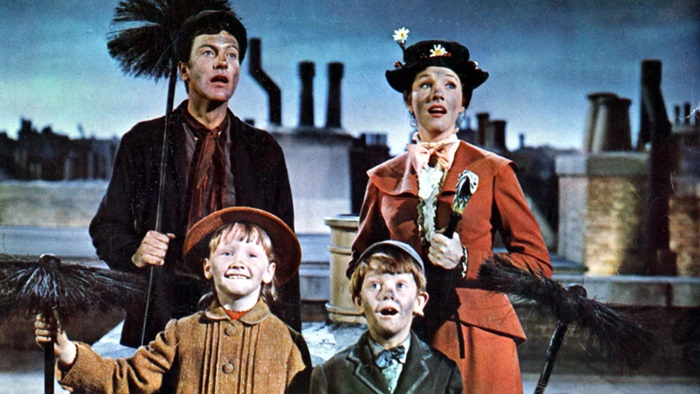A British film industry group has raised the age rating for the beloved children’s classic “Mary Poppins” over discriminatory language.
The British Board of Film Classification (BBFC), which regulates films and video content in the country, changed the rating of the 1964 Disney musical last week from U (Universal) to PG (Parental Guidance) because it features a racial slur once used by White Europeans to refer to the native peoples of southern Africa.
“Mary Poppins (1964) includes two uses of the discriminatory term ‘Hottentots,’” a BBFC spokesperson said in a statement to CNN. “While Mary Poppins has a historical context, the use of discriminatory language is not condemned, and ultimately exceeds our guidelines for acceptable language at U.”
The iconic film returns to UK theaters this year in celebration of its 60th anniversary, which prompted the BBFC to reexamine its original rating.
“Mary Poppins,” starring Julie Andrews in the titular role as well as Dick Van Dyke, follows the magical adventures of a nanny who comes to the rescue of the dysfunctional Banks family. It was a commercial and critical success in its time, with a lifetime gross of more than $103 million and five Academy Awards. In 2013, the US Library of Congress added it to the National Film Registry, which recognizes American cinema of cultural, historic, or aesthetic significance. And in 2018, it got a long-awaited sequel.
Even as “Mary Poppins” remains a treasured part of the cultural canon, the film has been criticized for trafficking in blackface. It’s partly in this context that the discriminatory language referenced by BBFC appears in the film.
In one scene, the eccentric Admiral Boom asks one of the Banks children if he is going on an adventure to “defeat hottentots.” Later in the film, as Admiral Boom sees chimney sweeps with soot-blackened faces dancing in the distance, he shouts, “We’re being attacked by hottentots!” and orders a cannon to be fired in their direction.
“Hottentot” is a derogatory term used by European settlers to refer to Khoikhoi peoples of South Africa and Namibia, according to the Oxford reference.
CLICK HERE TO READ THE FULL ARTICLE ON CNN
TYT Newsroom


